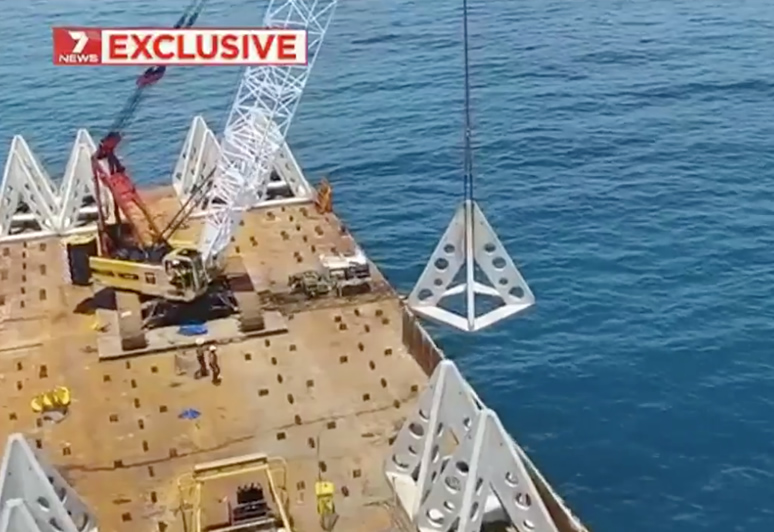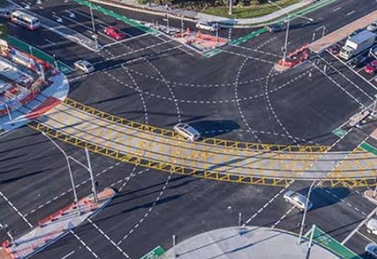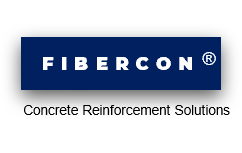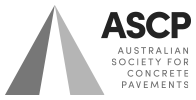Slabs
- Home
- Products
- Contact Us
- Research & Development
- Slabs
- Macro Synthetic Fibres
- Shotcrete
- Precast
- STEEL FIBRE REINFORCED CONCRETE
- Savings
- Technical and User Benefits and Application
- Quality
- Mix Designs
- FAQ Slab Design
- FAQ Installation
- All Case Studies
- Industry
- Thank you for your enquiry
- livingston council video
- Privacy and Anti-spam Policy
- Fibercon Shotcrete
- Councils and Infrastructure
- Fibercon Synthetic Fibres
- Superior Shotcrete Performance
- Fibercon MPP
- Benefits
- The Superior Shotcrete Fibre
- The Fibercon Offer
- Fibercon Specification
Steel Fibre Reinforced Concrete (SFRC) Floor Slabs
 Conventional practice usually concentrates welded wire fabric reinforcement within a single plane of a floor slab. Fabric does very little to reinforced the outer zones, which is why spalling is common at the joints and edges. The primary function of welded wire fabric is to hold the floor slab together after the first small hairline cracks have propagated to larger fractures. This serves to maintain some degree of “structural integrity”.
Conventional practice usually concentrates welded wire fabric reinforcement within a single plane of a floor slab. Fabric does very little to reinforced the outer zones, which is why spalling is common at the joints and edges. The primary function of welded wire fabric is to hold the floor slab together after the first small hairline cracks have propagated to larger fractures. This serves to maintain some degree of “structural integrity”.
Conventional wisdom’s approach to floor slabs is to maintain “material integrity” through SFRC mix designs. This integrity is accomplished by:
- Increasing the initial first crack strength.
- Large numbers of fibres intercepting the micro-cracks and preventing propagation by controlling tensile strength.
- Unlike rebar and welded wire fabric, fibres are dispersed throughout the slab to reinforce isotropically, so there is no weak plane for a crack to follow.
- Increases in flexural strength can make it possible to use a thinner slab and eliminate the cumbersome welded wire fabric.
- Whether it is for lighter duty commercial service or for heavy manufacturing, SFRC slabs are capable of withstanding any load. The only variable is the addition rate of fibre, which could be as low as 12.5kg/m3 and as high as 100 kg/m3.
IMAGE GOES HERE
Ground Floor Slabs and Concrete Paving – How they save time & money
- Completely eliminate steel fabric reinforcement: saving on both materials and labour
- Reduce slab thickness: saving in concrete and placement costs.
- Possibilities of wider joint spacing: saving on joint forming costs and joint maintenance
- Simplicity of construction: simpler joints and no more errors in steel fabric positioning.
- Increase speed of construction: saving time and reducing costs.
- Significantly reduced risk of cracking.
- Reduced spalling joint edges.
- Stronger joints.
- High impact resistance.
- Greater fatigue endurance.
- Reduced maintenance costs.
- Longer useful working life
IMAGE GOES HERE
Typical areas of Application include:
Industrial Ground Floor Slabs – Warehouses; Factories; Aircraft Hangers; Roads; Bridge Decks; Parking Areas; Runways; Aprons and Taxiways; Commercial and Residential Slabs; Piling; Shotcrete; Tunnels; Dams and Stabilisation.
back to the top
Improved Strength and Durability
Steel fibre reinforced concrete is a castable or sprayable composite material of hydraulic cements, fine and/or coarse aggregates with discrete steel fibres of rectangular cross-section randomly dispersed throughout the matrix.
Steel fibres strengthen concrete by resisting tensile cracking. Fibre reinforced concrete has a higher flexural strength than that of unreinforced concrete and concrete reinforced with welded wire fabric. But unlike conventional reinforcement – which strengthens in one or possibly two directions – Steel fibres reinforce isotropically, greatly improving the concrete’s resistance to cracking, fragmentation, spalling and fatigue. When an unreinforced concrete beam is stressed by bending, its deflection increases in proportion with the load to a point at which failure occurs and the beam breaks apart. This is shown in Figure 2. Note that the unreinforced beam fails at point A and a deflection of B.
IMAGE GOES HERE
Fig 2: Bending load :
Deflection curves of concrete in flexure A Steel fibre reinforced beam will sustain a greater load before the fist crack occurs (point C).
It will also undergo considerably more deflection before the beam breaks apart (point D).
The increased deflection from point C to point D represents the toughness imparted by fibre reinforcement.
The load at which the first crack occurs is called the “first crack strength”.
The first crack strength is generally proportional to the amount of fibre in the mix and the concrete mix design.
Two theories have been proposed to explain the strengthening mechanism. The first proposes that as the spacing between individual fibres become closer, the fibres are better able to arrest the propagation of micro cracks in the matrix.
The second theory holds that the strengthening mechanism of fibre reinforcement relates to the bond between the fibres and the cement. It has been shown that micro cracking of the cement matrix occurs at very small loads. Steel fibres, then, service as small reinforcing bars extending across the cracks. So as long as the bond between the fibres and cement matrix remains intact the Steel fibres can carry the tensile load. The surface area of the fibre is also a factor in bond strength. Bond strength can therefore be enhanced with the use of deformed fibres, which are available in a variety of sizes.
Steel fibres are available in lengths from 38 mm to 50 mm and aspect ratios between 40 and 60. The fibres are manufactured either deformed or hook end, and conform to ASTM A-820.
back to the top
Product Mix Designs
The proportions of Steel fibres in mix designs usually range from 0.2% to 2.0% (15 to 150 kg/m3 ) of the composite’s volume. Key factors to consider largely depend on the application under consideration and/or the physical properties desired in the finished project.
Mix designs with fibre proportions above 60kg/m3 are usually adjusted to accommodate the presence of millions of steel fibre reinforcing elements. The adjustments are an increase in the cement factor, a reduction in the top size of the coarse aggregate and the addition of a super plasticiser. Prototype testing is recommended to determine the optimum design for each application.
back to the top
IMAGE GOES HERE
Frequently Asked Questions – Design& Installation
- What is Steel Fibre Reinforced Concrete (“SFRC”) ?
Steel fibre reinforced concrete (“SFRC”) comprises hydraulic cements containing aggregate (fine, or fine and course) and steel fibres. A plasticiser or superplasticiser is often used to enhance mix workability. Steel fibre products (“SFR” or “steel fibre reinforcement”) are available in a variety of types and sizes from various manufacturers. However, the underlying principle of all SFRC designs is to provide discrete, discontinuous reinforcement and effective crack control. - How do Steel Fibres work?
Unlike wire mesh or rebar, steel fibres reinforce in three dimensions throughout the entire concrete matrix. The fibre functions to reinforce and restrain micro-cracking essentially acting as “miniature reinforcing bars”. Thus, the earlier a crack is intercepted and its growth inhibited, the lower the chance of it developing into a major flaw. - Are Steel Fibres a replacement for structural steel?
The sensible answer is “no”: nothing takes the place of a properly engineered application to code. In structural applications, sufficient continuous steel reinforcement is required to take the full applied tensile load. Among the exceptions to this rule, however, are certain pre-cast applications. Steel fibre reinforcement may be used in conjunction with structural steel. - What properties of the concrete are improved by using Steel Fibres?
Steel fibre reinforced concrete acts as a uniform composite material. Compared to plain or conventionally reinforced concrete, the most immediate differences are improved ductility and post-crack performance. However, the specific effects on matrix mechanical properties greatly depend on the type and quantity of fibre used. Generally speaking, smaller fibres with a high fibre count offer superior first-crack strength and better fatigue endurance. Should a crack open widely, longer fibres with mechanical anchorage mechanisms offer better post-crack performance.
What specific concrete properties does steel fibre technology improve?
- Flexural Strength – significant increase (1.5 to 3.0 times) in the first-crack and ultimate flexural (bending) strength can be achieved over plain concrete with higher dosage rates of shorter fibre products.
- Fatigue Resistance – the fatigue strength of steel fibre concrete is far greater (1.6 times) than that of conventional concrete.
- Impact– steel fibres greatly increase (1.5 to 5.0 times) concrete’s resistance to damage from heavy impact.
- Shear Strength – shear strength is much improved (1.25 to 2.0 times) over unreinforced concrete.
- Shrinkage– although the steel fibres themselves do not affect shrinkage rate, they can minimise and help eliminate shrinkage cracks, particularly in a restrained situation.
- Abrasion– steel fibres do not affect the abrasion rate of concrete mortar itself. But they do offer a high degree (1.2 times) of protection against heavy duty abrasion and gouging. Spalling is dramatically reduced.
- Permeability – again, steel fibres do not directly affect concrete permeability. But by effectively controlling micro-cracking – and the resulting susceptibility to moisture and chemical penetration – SFR can help reduce the overall porosity of the matrix.
- If SFRC is so good, will it entirely eliminate cracking ?
Nothing protects against bad materials and methods and nothing can entirely eliminate cracking. SFRC offers an extremely effective means of controlling cracks – and can substantially reduce opportunities for cracking. Design and installation practices can yield unpredictable results. That’s why optimal attention to product selection, engineering, sub-base preparation, joints, and curing are so essential to overall project performance. - Can Steel Fibre slabs be substantially thinner?
Steel fibre reinforced slabs can be designed in a couple of different ways. Using the more conventional elastic state theory (Westergaard), if the critical load on the slab is static the slab thickness will be much the same as with traditional materials. But if the critical load is dynamic, SFRC’s vast improvement in fatigue resistance can justify a lower safety factor. So the resulting slab can be as much as 25% thinner for the same load carrying capacity. - What about the use of plastic state design method?
The exceptional post-crack performance of SFRC does permit use of a plastic state design method, such as Myerhof, which will, in turn, allow substantial reductions in slab thickness. However employing this type of design approach will result in radial cracking under the load, as well as increased slab deflection. - What is the typical dosage rate? SFRC dosage rates depend on the application and the concrete properties required.
Typically, 20 – 50 kg/m3 will satisfy most requirements. Lower dosages tend to be used when replacing conventional steel mesh. At higher concentrations vastly improved mechanical strength properties allow SFRC to be used in the most demanding applications. - How does SFRC lower costs over the installation’s life?
Depending on the type, quantity and complexity of reinforcement in traditional design, SFRC can offer substantial cost savings. On occasions, initial costs of steel fibre alone might be slightly higher, but when labour, time, material and activities savings are considered, SFRC costs per m2 actually diminish. Moreover, the superior performance of steel fibres concrete often results in reduced maintenance expense over the installations’ life – further lowering “whole life” project costs. - How should Steel Fibre specifications read?
The following phraseology is all you need to secure the benefits of steel fibre technology: “Steel fibre reinforcement shall be added to the concrete at a rate of _________ kg/m3. Steel fibre shall meet all requirements of ASTM A820-90 type 1. The fibre shall be made from deformed steel wire with a tensile strength in the range of 800-1000 Mpa and have sufficient ductility to permit 180 degree bends without rupture. Fibres shall have an aspect ratio in the range of 40 to 50 and a length of 38 mm.” - What is the difference between Synthetic and Steel Fibres?
Synthetic fibres mainly help control plastic shrinkage cracking, which can occur in the very early stages of concrete life. Steel fibres reinforce the concrete in its hardened state, thereby improving its strength and durability. The major difference between steel and synthetic is their respective Young’s modulus and tensile yield strength. Steel fibres have a sufficiently high modulus of elasticity and tensile strength to assume excess strain across a crack – and hold it tightly.
IMAGE GOES HERE
Installation
- Can Steel Fibres replace two layers of wire mesh in a floor slab?
In ground-bearing industrial floor slabs, common design practice occasionally dictates using two mesh layers. However, this steel is not acting in a structural capacity and can therefore be readily be replaced with FIBERCON steel fibre reinforcement. - How are the fibres added to the concrete?
Fibres can be added at the batching plant by depositing onto an aggregate conveyor. Product can also be added by gantry or lightweight conveyor directly into the back of a transit mixer on site. - Don’t Steel Fibres “ball up” when mixing?
Homogeneous, trouble-free mixing depends on the fibre product’s aspect ratio – the ratio of length to diameter. If this number exceeds 55, the risk of fibres bunching together increases. Special packaging methods and/or dispensing machinery might then become necessary. But if the aspect ratio falls below this critical range, fibres can be added directly into the mix at virtually any stage – without fear of balling. - The fibres are made from mild steel – what about rusting?
The relative density of Steel is 7.8 and concrete mortar’s is about 2.4 When concrete is vibrated, fibres begin to align themselves in the top layer of laitance. Subsequent operations such as floating and trowelling further embed the fibres, so the number of fibres exposed at the surface of a finished installation is minimal. If subjected to conditions that promote corrosion, however, these fibres will rust, but will almost certainly not create a cosmetic problem. In circumstances where finish is critical, such as in architectural panels incorporating white OPC, stainless steel fibres are available. - Why doesn’t rusting lead to other problems?
The small size of individual steel fibres prevents a build up of expansion stresses during the corrosion process. The discontinuous nature of steel fibre reinforcement also effectively eliminates galvanic corrosion. Hence, concrete spalling and bursting does not occur. Finally, past studies of structures like bridge decks conclusively prove that fibre corrosion only occurs to the depth of the concrete’s carbonation. - Can Steel Fibre Reinforced concrete (“SFRC”) be textured?
Yes. Any conventional method can be used – although the use of hessian drag is not recommended. The heavier the texture, the more the fibres will be pulled from the surface. Again, the presence of these fibres will not pose any appearance or safety problem. Successful installations throughout the world – including roads and bridges – bear testimony to this. - Can Steel Fibre reinforcement be used in the presence of a wire guidance system?
Again, since steel fibre reinforcement is “discontinuous”, it does not interfere with wire guidance systems.
Unlike conventional reinforcement, no minimum cover is required. - Do Steel Fibres affect the slump of concrete?
Adding steel fibres, particularly at higher concentrations, will give rise to an apparent loss as measured by the slump test.
This results from fibre interlocking – which, when energy is applied, will align and allow concrete to flow more readily.
Generally, it is recommended that the base slump of concrete without fibre is 25-50mm greater than the final desired target. This is normally achieved by incorporating a small quantity of (super) plasticizer. - Can SFRC be pumped?
FIBERCON SFRC can be readily pumped – providing, as with conventional concrete that the base mix contains sufficient fines to prevent segregation. - Can SFRC be placed and finished using conventional techniques?
Yes. Use of standard construction methods will yield excellent results. Steel fibre reinforcement also offers a whole new dimension to modern large placement methods of floor construction – such as Laser Screed technology – as well as to more conventional techniques. - What about joint detailing?
If using long bay construction methods, the longitudinal joints would be tied using dowels, as per conventional design. Transverse joints are typically saw-cut induced to 1/3 the slabs’ depth. Cutting should take place as early a possible – i.e., within 24 hours of pouring. Spacing between joints not only depends on the incorporation of steel fibres, but also on other considerations – like concrete shrinkable characteristics and the quality of sub-base preparation. Hence, joints will typically be spaced at between 6m and 12m centers, normally to coincide with columns or other intrusions.
The length-to-width ratio of panels should not exceed 1:1.5.
Construction of “jointless” floors – heavily reinforced slabs cast in bays to 2,000m2 is also increasingly popular. There is normally a compromise between number of joints, joint openings and cracking risks. The most suitable jointing regime should be assessed on a case-by-case basis.
back to the top
Application
Save Time & Money With FIBERCON. We will engineer your solution- Leader in Steel and Macro Synthetic Fibres
- Custom fibre designs and packaging available
- Excellent crack control
- Superior installation performance
- Unequaled cost-effectiveness
- No handling or finishing problems
- Variety of standard types and sizes available
- Engineering and design assistance available...
Case Studies

FIBERCON fibres were chosen for Stradbroke Island artificial reef

Magnetic Island Walkway protected against salt corrosion

FIBERCON MP47 was chosen for Gold Coast Light Rail Project
Subscribe to our Newsletter
Keep up to date with the latest on our product developement and what’s new in the industry






